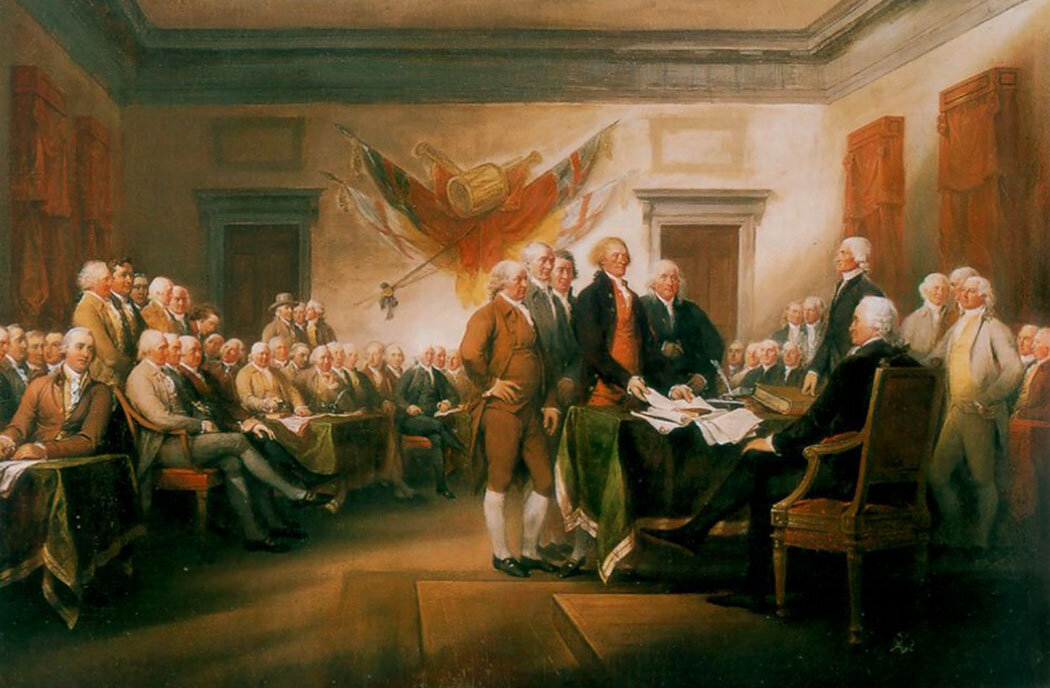
Seat of Government,
1783 – 1801
Painting: A Vision Takes Form, by Peter Waddell for The White House Historical AssociationIn the beginning, Americans are torn by conflicting visions of what their government should do. Where should power lie, with a strong centralized government (the position of the Federalists) or a decentralized nation of yeoman farmers (as argued by the Jeffersonian Republicans)? Chaos reigns in the early days of the Republic and founding fathers seek to safeguard a fledgling government against riots and rebellion. No one knows whether the system established at the Constitutional Convention will function. They fear that the whole jerrybuilt system might breakdown and shatter.
Declaration of Independence, Arch of Cap
In response to a 1783 mutiny by Continental Army soldiers seeking back pay, Federalists push for protection of the government. In another compromise, Jeffersonian Republicans agree to pay Revolutionary War debts in exchange for Washington, D.C. being located on the Potomac River in the heart of slave country.
America’s founders establish a new nation marred by a core contradiction: they speak of a nation based on liberty and democracy, yet the location of their capital, Washington, D.C., is chosen to preserve slavery and will rely on slave labor for the Capitol building itself.
Conflicts surface again during the bitter election of 1800. When Jefferson wins, Federalists rush to secure their vision for the nation before Jefferson assumes office. They wage a rear-guard action with the Organic Act of 1801, setting up the capital as a District, not a state, and under exclusive control of Congress.
Threshing slaves
Cabin John Bridge and Potomac River, Washington, D.C.


